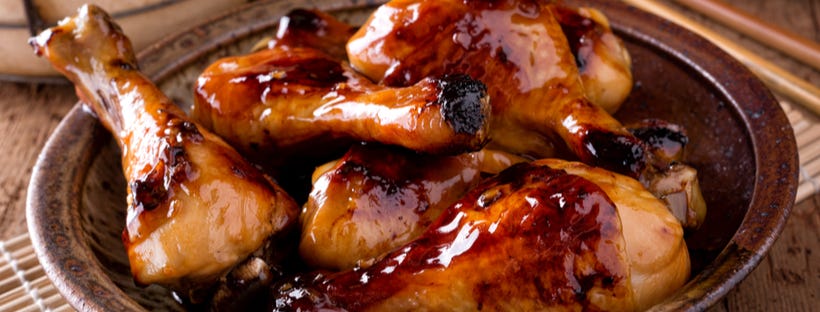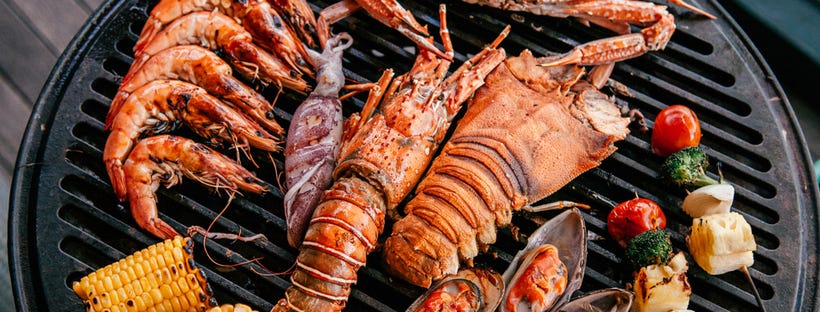This Memorial Day weekend will be filled with the smokey scent of BBQ to match the thematic elements of custom covers on your patio. Your backyard parties will be home to the best hamburgers, hotdogs, and steaks of the year, as long as they are prepared with meticulous care. Outdoor entertaining is all about building an ambiance, from posting up shade to curating an appetizing menu get your summer cooking in style.
With Grate Power…
It is infinitely more sensible to invest in a high quality grate and solid utensils than to fret about the latest and greatest grill on the market. Search for a grate with thick, sturdy bars and spaces that are just the right size. Find tools with long handles and strong materials to avoid any bending or breakage.
Clean Your Grate
Make sure to clean the grate before grilling. After a winter spent untouched under a grill cover, there’s no telling what might be leftover on the surface from season’s past. No one wants a side of rust with their meat. Charred remains can be removed with a steel brush and aluminum foil. Wipe off any excess grease with a dish towel, and you are ready to start cooking.
Prep Time

Believe it or not, what makes or breaks a proper summer steak is its preparation before it hits the grill top. Make sure you are working with room temperature meat to avoid under or overcooking. Pat your cut dry with a paper towel to ensure a delicious caramelized crust. Excess moisture will steam-cook the beef, which both inhibits the caramelization and may give the meat some unpleasant flavors.
Seasons Greetings
Although salt brings out the most flavor, avoid seasoning your steak until right before it is thrown on the grill – if not after. The salt pulls moisture to the surface and will ruin any hopes for a decent crust. Once it is ready to be seasoned, throw on a generous amount, as much of the salt will fall off and land on the coals. Avoid pepper until after the meat is cooked because if it burns, it will give off a bitter flavor.
Rub a Dub Yum
A day in advance: apply a dry rub of your choice and let the meat sit overnight in your kitchen’s fridge. This may appear to dry out the meat come morning but you actually only lose about 5% of the moisture.
Oiled Up

You shouldn’t use any oil right on meat because it offers little flavor and just burns into smoke. You can use a little acid like lemon or vinegar to bring out the meat’s savory goodness. If you have any glazes or marinades that have sugar in them, wait until after the steak is off the grill to apply.
Light My Fire
Don’t throw a steak on the grill until it has already been preheated and the flames have had a moment to die down. You’ll know it is ready when the coals are coated with white ash. Once the meat hits the heat, let it sit untouched until a crust begins to form. The beef will release naturally due to the caramelization, and when the juices start oozing to the top, give it a flip.
Thick of It
Turn regularly, every minute or so. For thicker cuts, move the meat to indirect heat if you are using a two-zone cooking method. After the crust has formed, cover it with a lid to finish the cooking process. The result is a rich, juicy steak with solid grill marks and bursting flavor.
Meat the Methods

Cooking methods range for each type of meat, so if you are a fan of chicken or fish, make sure to be aware of these differences. Grilling seafood especially will need a lot of attention, as fish can become dry quickly. Remember the following proper cooking temperatures:
Poultry – 165° F
Beef – 145° (rare) – 170° F (well done)
Seafood – 145° F
Rest Stop
Just before the meat is done cooking, remove it from the heat and let it rest. The residual heat will continue the cooking process, allowing the fibers to soften without releasing any juices. Letting the meat cool down also prevents any potential burnt taste buds. This would be the moment to add any specific marinades, prepared beforehand.
Relax
After about ten minutes, the steak should be ready to cut because the structure is stable enough to hold in the moisture. Cut the meat perpendicular to the grain to create soft and tender pieces ready to melt in your mouth. Serve up the pieces on a large plate for guests to devour and enjoy the fruits (and flavors) of your meticulous labor.

















Recent Comments